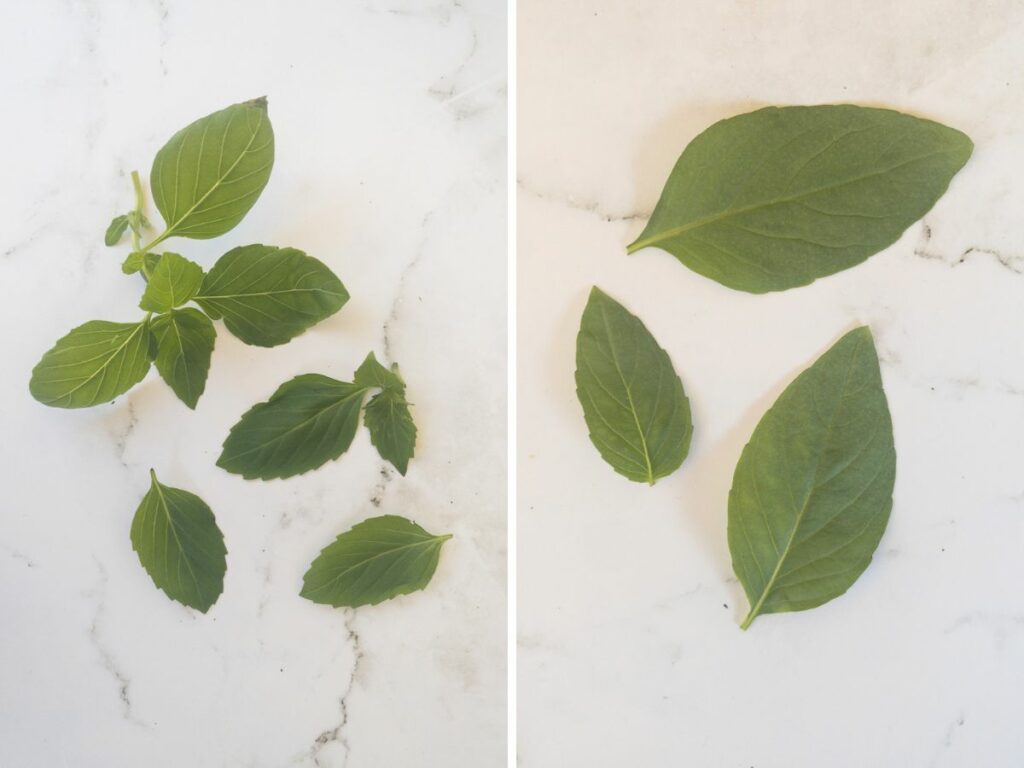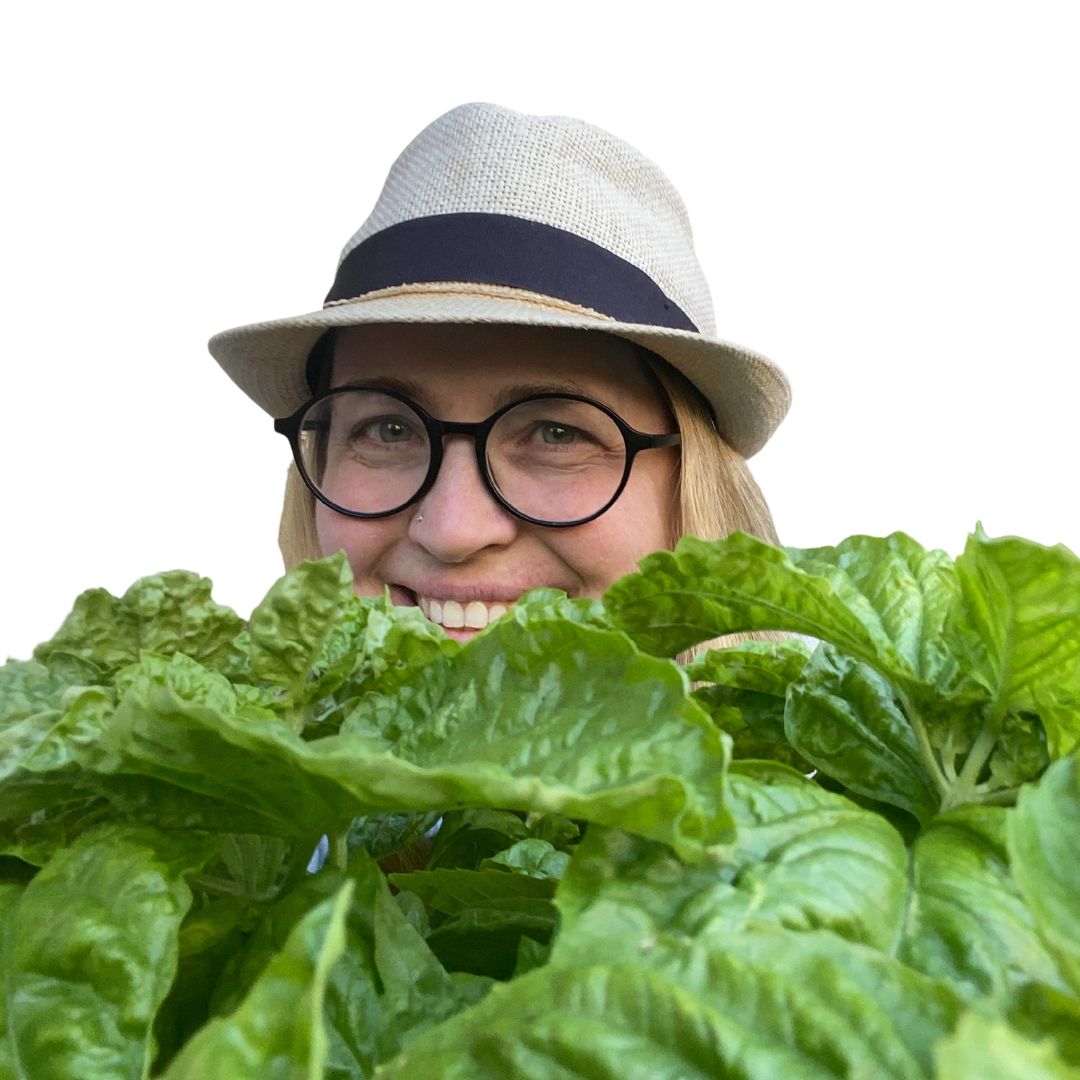As an Amazon Associate I earn from qualifying purchases. This website also participates in other affiliate programs and may earn commissions if you shop through the links used on this website.
(This article was originally published on August 12, 2022 and was last updated on September 10, 2022)
A popular culinary herb in much of the world, basil (ocimum basilicum) is a green or purple leafy plant, and a member of the mint family (Lamiaceae) that shares some characteristics with its plant cousins. These include a square stem, pairs of leaves that grow on opposite sides of the stem, and whorled, irregular flowers.
Sweet basil (common basil) has a very distinctive appearance, but when you dig into the different basil types, you’ll find a wide variety of appearances and characteristics. Which begs the question: what does basil look like?
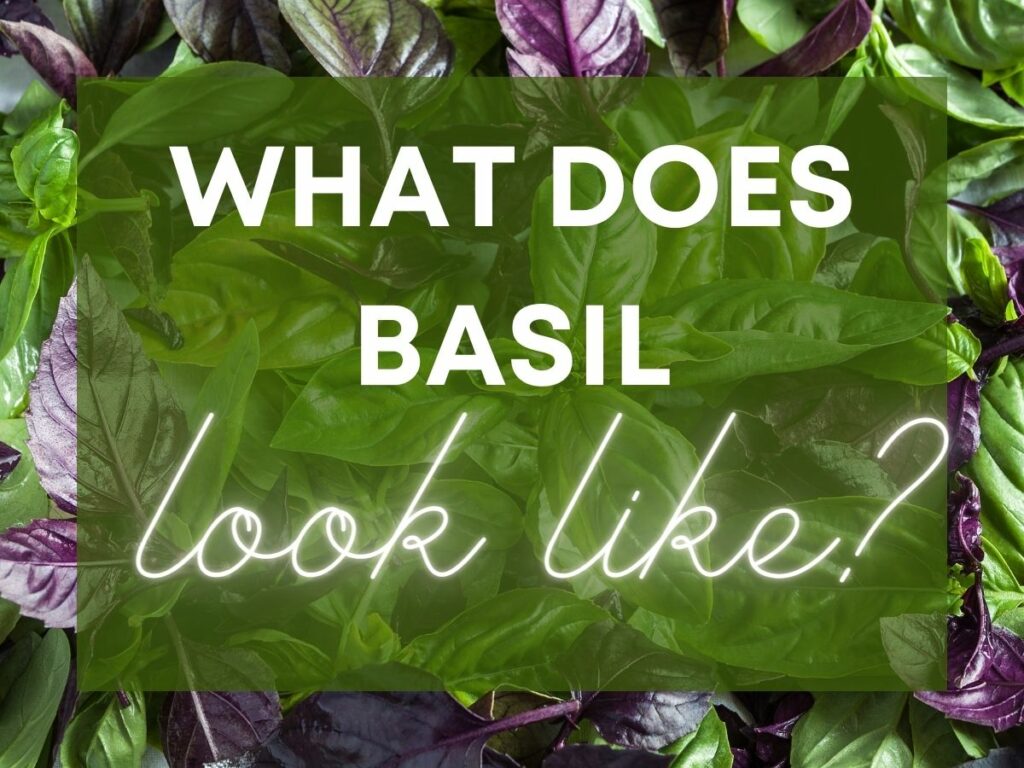
Plant Growth and Structure
Basil is a bushy, leafy plant, with leaves that range from a rich and vibrant green color, to yellowish green, to silvery green to purple.
Tap Root System
Basil has a tap root, which is a dominant or central root, from which the other roots of the plant grow outwards. The tap root is distinguishable from the other roots on the basil plant because it’s much thicker, and grows relatively straight down. In contrast, the other roots grow outwards.
You can clearly see the tap root here in the cutting I’m growing in water.
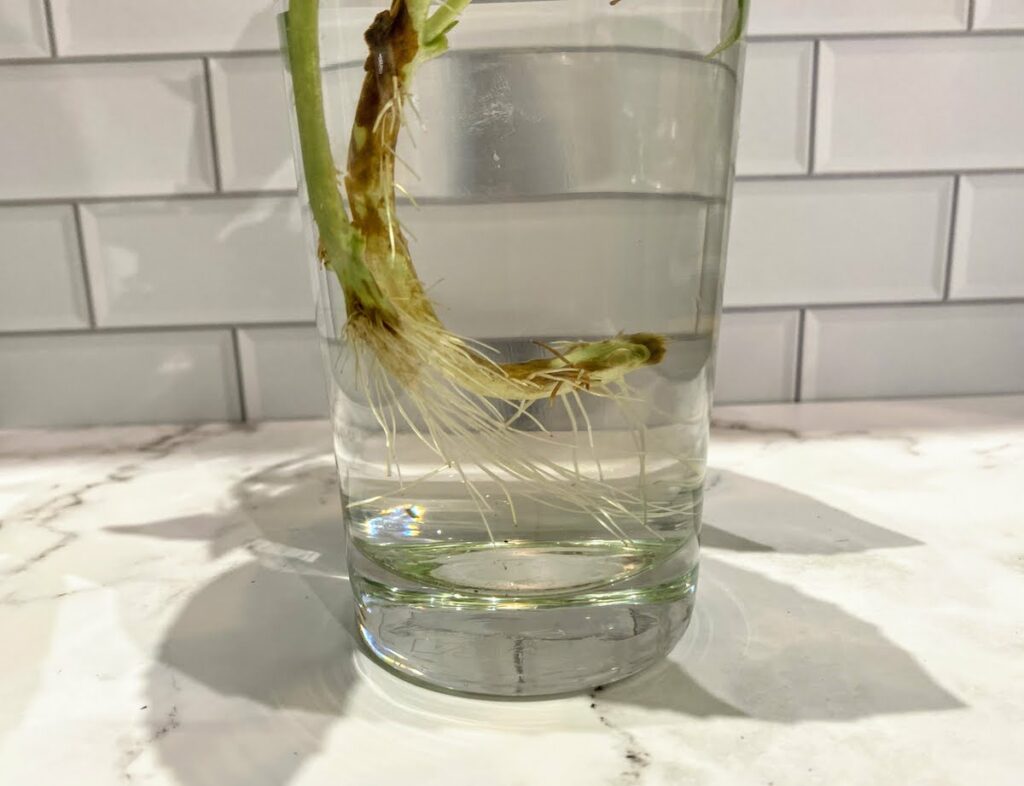
Basil Stems
Basil stems are square and slightly hairy.
The square shape of the stems is much easier to spot in larger, mature plants. However, you can also observe it in seedlings by feeling the stem, and noticing the hard edges as you run your fingers around it.
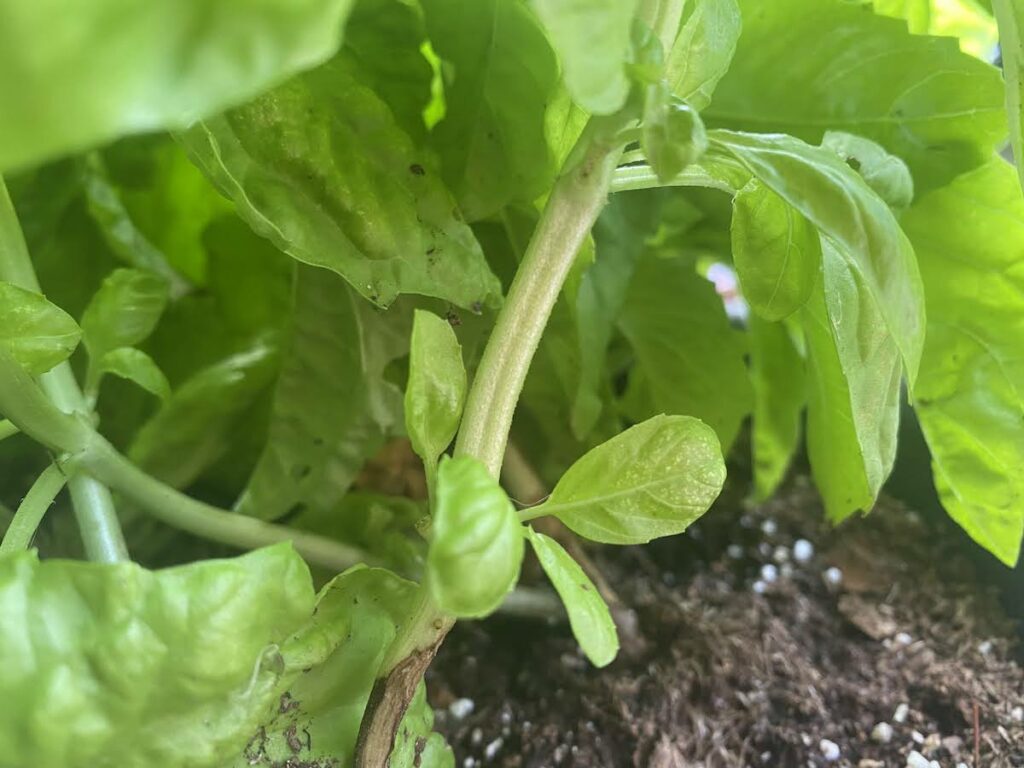
Close to the soil, basil stems are woody, and sometimes take on a brownish yellow color similar to the root system under the soil, changing color and becoming thinner towards the top of the plant.
Basil stems vary in color depending on the cultivar or species. Common sweet basil has green stems, whereas Thai basil and dark opal basil have purple stems (sometimes).
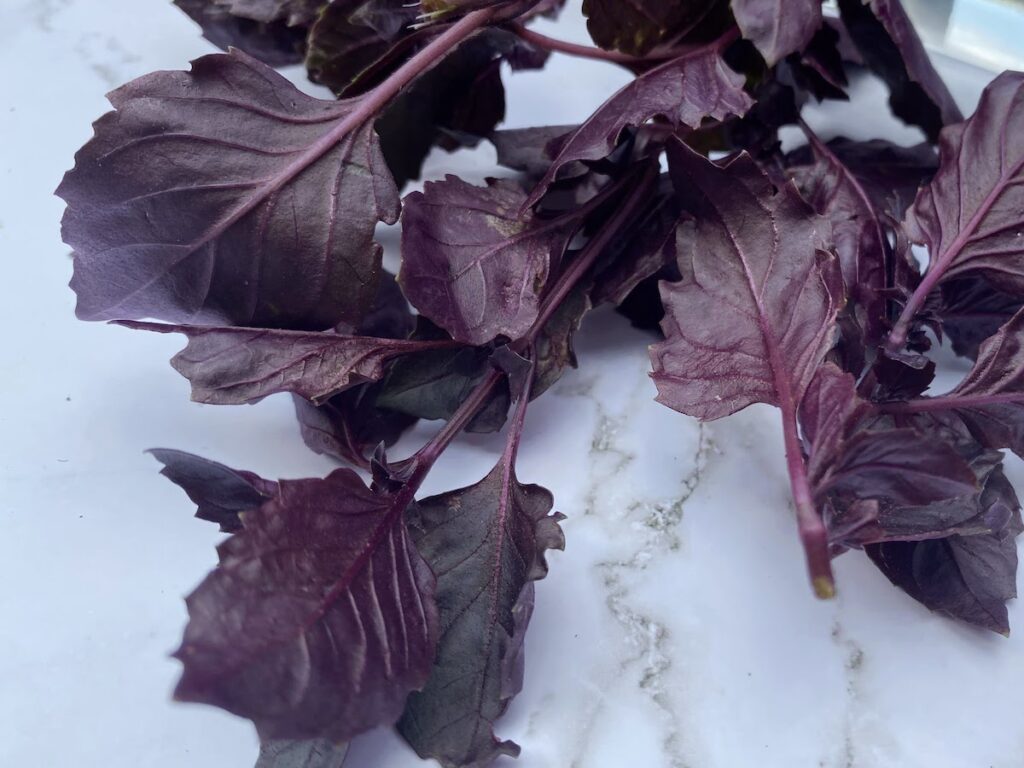
Basil Leaves
Basil leaves grow in pairs on opposite sides of the plant stem. The next pair of leaves to grow do so at a perpendicular angle to those that came before, which fills out the stem on all sides.
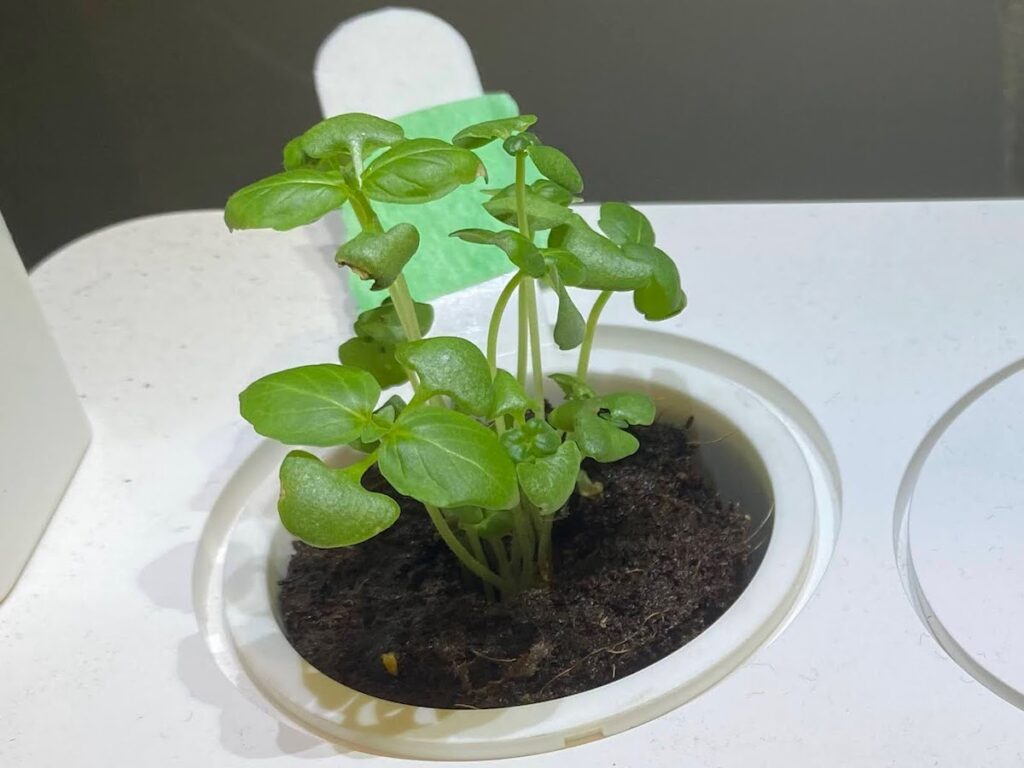
Leaves range from a vibrant green color to dark purple, with a range of shades, vibrancies, and markings in between – even on the same plant!

Common sweet basil, sometimes also known as Genovese basil or Italian basil, has shiny, vibrant green leaves that are a similar color to mint leaves. They are an oblong oval shape, coming to a pointed tip at the end farthest from the stem, and curving downwards towards the ground to create a slightly puckered look. Sweet basil leaves grow up to ~4 inches long (10 cm), and are smooth or slightly bumpy to the touch, with slight grooves where the plant’s veins are.
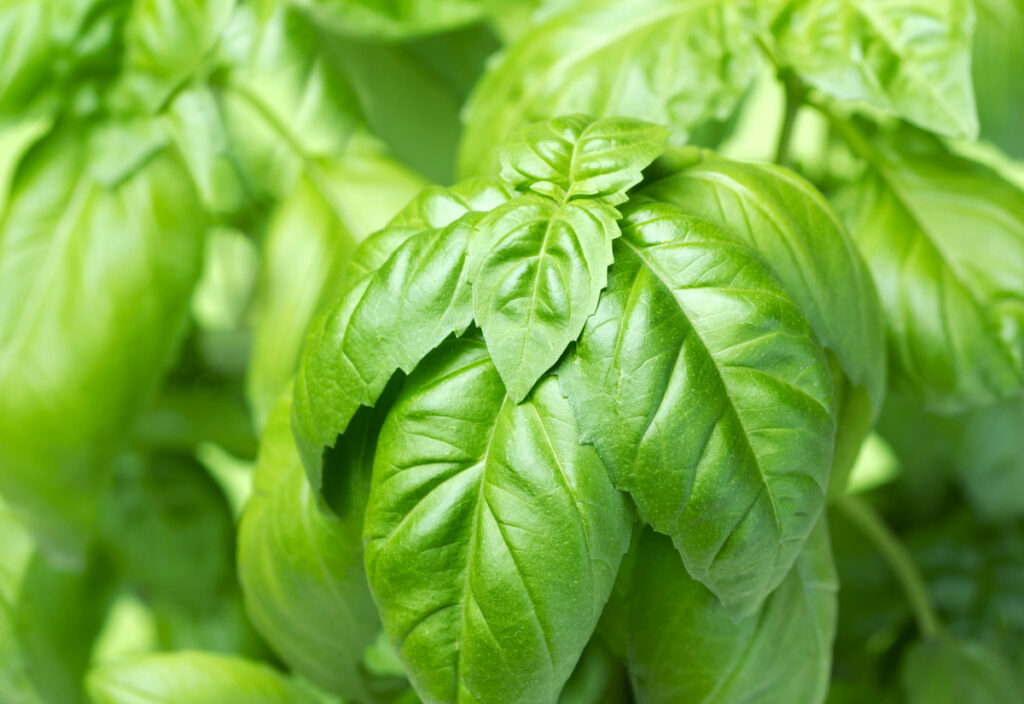
Basil leaves vary in appearance depending on the type of basil:
Napoletano, Mammoth, and Tuscany basils are known as lettuce leaf basils. They have large, crinkled leaves reminiscent of lettuce and gently serrated edges. The leaves grow up to 6 inches (15 cm) long.

Whereas sweet basil has shiny leaves, Persian basil has dull leaves that have almost silver undertones to the green color, and some have purple veins and coloring to them.
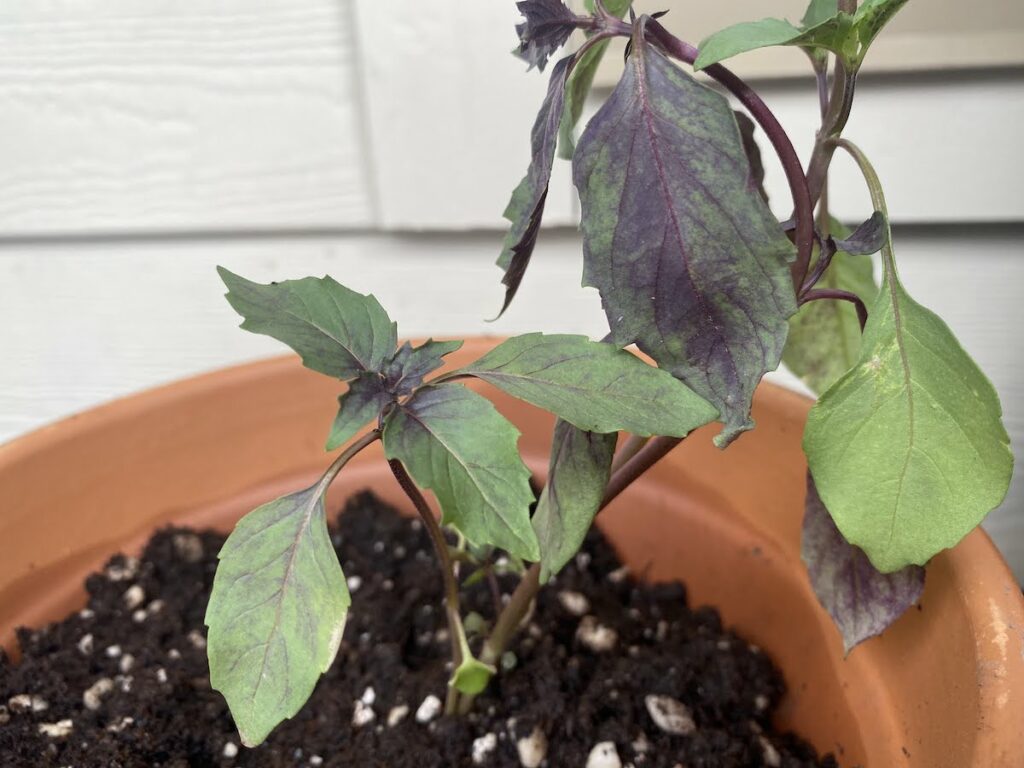
Dark Opal basil has deep purple leaves, although some leaves have green mottling on them, with a variety across the same plant. Both photos below show the variation in appearance of dark opal basil leaves the same plant.

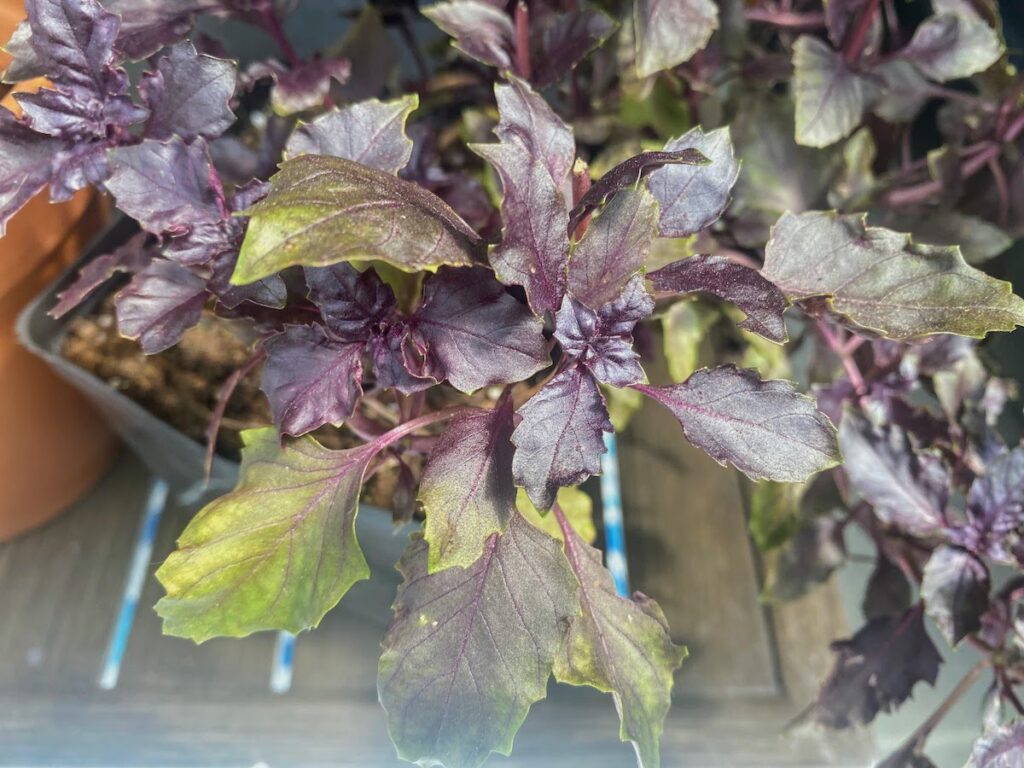
Spicy bush basil is a dwarf basil with comparatively tiny leaves.
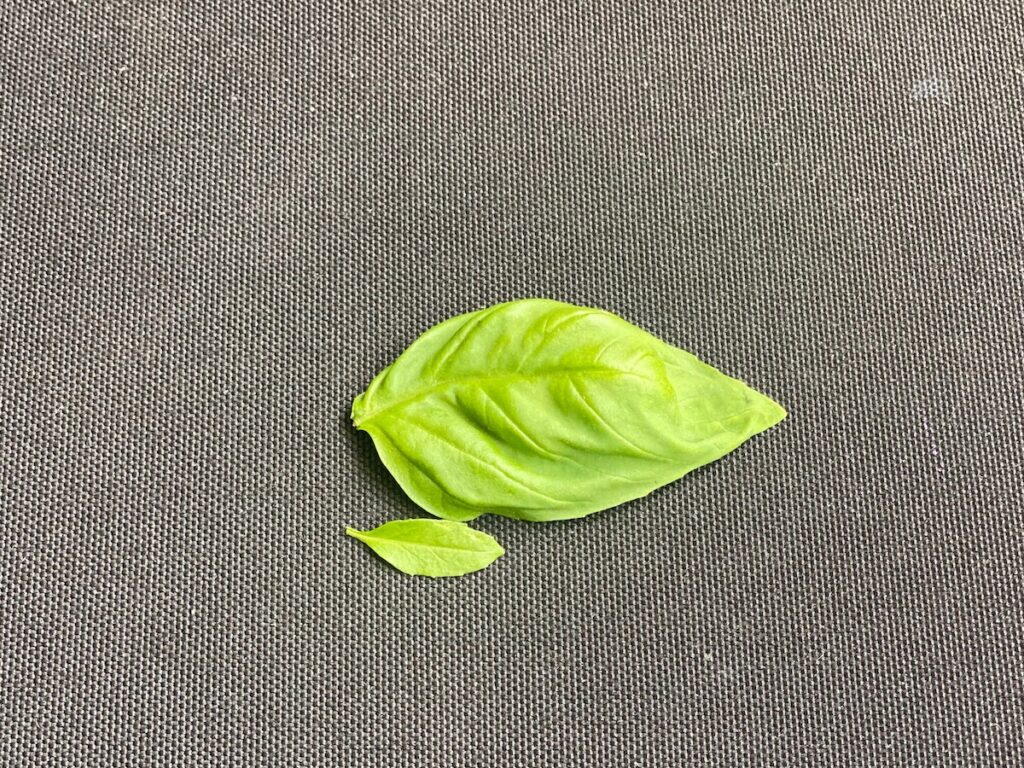
Lemon basil has more yellowish green leaves that are smooth, and flatter than sweet basil.
And some of the ruffled basils – such as purple ruffles – look more like purple arugula (rocket) in terms of their leaf shape and appearance.
Growth Pattern
Basil grows as a bushy plant, with common basil growing as tall as ~25 to 30 inches (63 cm to 72 cm), and the plant branching outwards to fill it out as a bushy look.
Plants that doesn’t grow bushy overtime is known as leggy basil, and it’s indicative there’s a problem with the growth, or a lack of regular harvesting / correct pruning.
Basil Flowers
Basil is a flowering plant, and with the exception of several sterile, non-seed-producing basils, flowering will result in seeds that you can collect and grow in the next growing season.
Unfortunaltey, most basils become slightly bitter in taste after flowering, and full bloom marks the end of the plant’s usefulness as a kitchen herb. As such, many gardeners will try to delay flowering by picking the flowers off the plant as spotted.
Depending on the cultivar, you might spot purple flowers, reddish flowers, white flowers, or pinkish-lavender flowers on your basil plant. If you stay on top of it, you can usually pick off the flower buds, which have a whorl like appearance, before they actually flower.
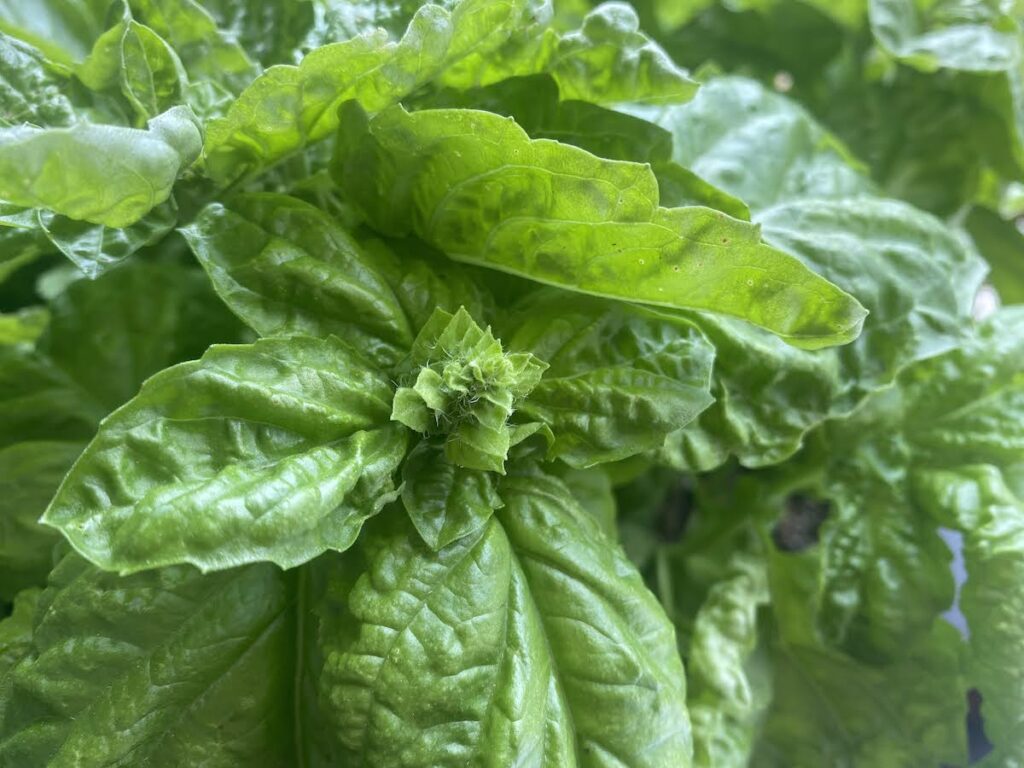
Summary
So…what does basil look like? Well, it depends. There is a massive amount of diversity in the world of basil, and despite different cultivars sharing many similarities, there are also a lot of differences in appearance. The best way to tell it’s basil? The distinctive smell, of course!
